Goonhammer Historicals is our series looking at the incredibly diverse world of historical wargaming – different scales, different eras, different rulesets. Today in Goonhammer Historicals we look at getting started with gaming in the Viking Age, from the earliest raids to the Norman Invasion.
A fast-growing period in historical wargaming, the Viking Age (also known as the early medieval and dark ages) is a great choice for new historical gamers thanks to the many skirmish games on the market. These iconic warriors and their foes are a great subject to get your teeth into, and the smaller scale of most warfare means collecting multiple armies is very plausible. That’s not to say that mass battles are off the table – there are several rulesets supporting this, and the huge shieldwalls of the vikings and their enemies are a compelling sight on the tabletop.
Historical Highlights
The Viking Age can be said to have begun in 793CE with the first Viking raids. The cultures in question certainly existed before this, but the advent of raiding by Norsemen overseas was a distinct shift to a new war of fighting and living.
Raids on the British Isles
The earliest raid on the British Isles we know about is recorded in the Anglo-Saxon Chronicle, and is said to have taken place in 789CE, when a group of Scandinavian sailors landed on the Isle of Portland in Dorset, and killed an official who mistook them as merchants. However, the first true raid would take place four years later, when the monastery at Lindisfarne was sacked and looted. This was a herald of things to come, and over the following decades dozens of monasteries and hundreds of towns and villages fell prey to raids. These were led by professional, hardened warriors, come for the riches and loot of England in particular. The crews of the ships that engaged in such raids numbered a few dozen, but were more than a match for the farmers and monks who were often their only opposition.
As time went on, however, those living on the coast and along the rivers that the Vikings sailed along formed militias and forces to respond to these raids, and they were resisted more fiercely. The Vikings favoured a wedge shaped charge, relying on their ferocity and strength to break the enemy lines, while the Saxons they faced formed shieldwalls to try and resist them. These small clashes, often with less then a hundred fighters in total, are perfect fodder for small warband and skirmish gaming.
Vikings in Ireland
It was inevitable that the Vikings would look to the rich island of Ireland next, which had considerable prosperity in sheep, and whose peoples were often disorganised and warred amongst themselves. They landed only a couple of years after their first foray into England, and soon established footholds there. They took slaves, and by the 840s had established fortifications, wintering there and building settlements. This marked the transition from raiders to colonisers, and soon settlers had formed permanent communities in the northern regions of Ireland, eventually becoming known as the Norse-Gael, a people with heritage drawn from the Vikings and the local Irish. The Kingdom of Dublin was under the rule of the Vikings on and off for many decades, and conflict between the Norse and the Irish was common. On the tabletop these clashes can be small, but also are fertile ground for larger battles, as the Vikings and Norse-Gael forces of the North go to war with the Irish of the south.
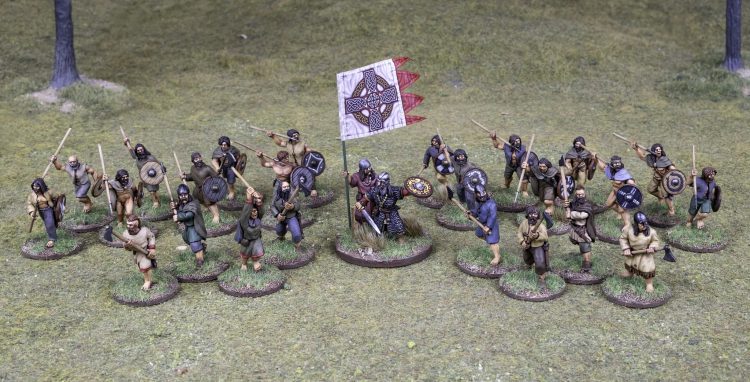
Varangians
The Vikings did not only sail across the North Sea, but also the Baltic, and made their way along the rivers in what is today Eastern Europe and Russia. They came to rule the city of Novgorod, and were known to the Rus and Slavic peoples as Varangians. They formed kingdoms across this stretch of the world, and became a key part of the local power balance. Soon their united Rus and Varangian forces threatened Constantinople and the Byzantines to the south, who they would war with for many centuries. Eventually Varangians even served as mercenaries in the Byzantine Empire, with the Varangian Guard being some of the fiercest and most respected warriors in all of history. The many battles of the Varangians, against the Rus and Slavic peoples, and then the Byzantines and other kingdoms to the south, is fodder for war on almost any scale, and potentially the focus of large pitched battles unusual in other places.
The Anglo-Danes
The settlements in Ireland and those in the east were not the only place Vikings colonised, and by the late 9th century there were Norse ruled areas across England and Scotland, many of them focused around Northumbria. Viking kings were enthroned, and wars between them and the Anglo-Saxons of the south were common. The Dane-Law, as it became known, was the Viking-ruled area, and this expanded aggressively, though defeats at the hands of the southern kingdoms eventually led them to retreat north again. The wars across England continued for more than 150 years, until eventually Sewyn Forkbeard was crowned king of England in 1013. Rule went back and forth between Saxon and Viking kings until the death of Cnut, and the failed attempt to regain the throne by Harald Hardrada in 1066 with his defeat and death at the battle of Stamford Bridge. These sweeping battles are some of the best opportunities to portray massed Viking warfare on the tabletop, and the characters of the Viking kings are very compelling in recreation.
Raids in Central Europe and the Normans
The Viking raids did not stop at the islands to the north of the continent, and the Franks were particularly harried and harassed by constantly Viking incursions. Viking raiders sailing up the Seine and even reached Paris, and monasteries across Frankish lands were looted and burned. The Vikings were finally turned back by Odo of Paris, but eventually a prominent warrior named Rollo was baptised, and granted the Duchy of Normandy by King Charles the Simple. This lead to the rise of the Normans, Viking settlers in the northern Frankish lands, who would eventually rise to power and invade England, defeating Harald at the Battle of Hastings, and becoming the English nobility. Though the Viking age is often considered to have ended in 1066, in truth, the Vikings became the rulers of England by a different route, and their prominence continued for centuries more.
Wargaming in the Viking Age
Viking Age (also known as Dark Ages or Early Medieval) era gaming is increasingly popular, with numerous manufacturers offering miniatures for this period, and several major rulesets being available to play with. Though larger battles are possible, warfare of this era was generally smaller in scale than many others, which lends itself well to skirmish and warband play. This makes it quite accessible for new players who don’t want to invest in hundreds of miniatures right away.
Though this period covers roughly 250 years, tactics and equipment did not radically change over this period, making forces relatively compatible regardless. There absolutely were differences between the warriors and equipment of the first Viking raids of the 8th century, and those of the 11th, but not to such a degree that you can’t often “get away with it”. This is fantastic for a new player, as it means you have a much broader pool of possible uses for your miniatures.
What games should I play?
Here are a few of the most popular games for the period.
Saga: Age of Vikings
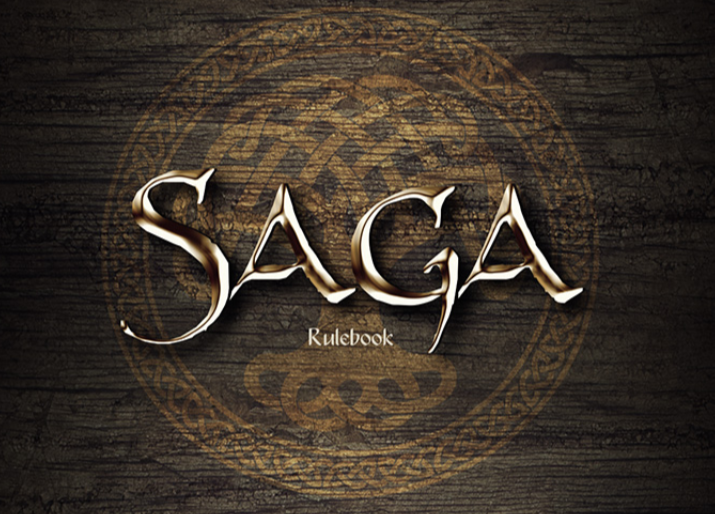
It’s hard to imagine talking about historical wargaming in this period without talking about SAGA, which was one of the major influences in popularising the period in wargaming in recent years. Designed for warbands of 20 – 60 miniatures a side, the wargame by Tomahawk Studios is currently in its second edition, and Age of Vikings is the most popular “Saga Universe” that they offer. Warband construction is extremely simple, and factions are very flavourful thanks to the battleboard system that the game is driven by. Getting started in Saga is often a case of grabbing the rulebook and a single box of miniatures, which makes it very popular with new players.
You can grab the rules for Saga from Gripping Beast, the distributor of the game in English. They are only available in hardcopy, as the battleboards that come with them are essential to play. You’ll also need some Saga dice to match your faction, and there are some great 4 points starter boxes as well for Anglo-Danes and Vikings.
Hail Caesar and Shieldwall
Produced by Warlord Games, Hail Caesar is a classic mass battle game first published in 2011. It focuses on large armies of hundreds of troops, which can be intimidating to new hobbyists. Recognising this, and the warband-scale fighting of the period, the Shieldwall supplement also offers a variant skirmish ruleset that scales the action down to something more manageable.
You can grab the Shieldwall book and the Hail Caesar rules from the Warlord Games website.
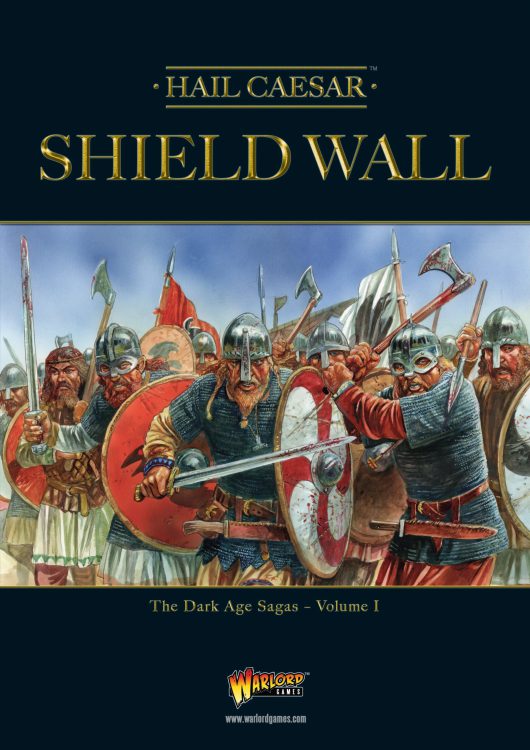
Lion Rampant
Though mostly focused on slightly later eras, this light ruleset from Osprey Wargames absolutely works well for this era. The systems themselves are easy to get to grips with, but you’ll find a surprising amount of tactical depth despite this. The game is focused on small bands of 30-50 miniatures, placing this in the same kind of scale category as Saga or Shieldwall.
You can get a copy of Lion Rampant from Osprey’s website.
Comitatus
In print since the early 90s by Legio Games and one of the venerable veterans of the wargaming world, this game focuses on warfare in a broad sweep from 250CE – 1100CE. Resolutely focusing on large battles with hundreds of models, this is definitely not a simple ruleset, but its fans love the complexity and nuance of its play and the authenticity of its representation of the period. There’s a free PDF download (also called Shieldwall confusingly) that gives specific adaptations for it in the Viking Age.
You can get a PDF copy of the rules from the Legio Games website.
What miniatures should I buy?
Victrix Miniatures
As usual, Victrix are considered the gold standard for historical hard plastics, and their dark ages ranges are no exception. They do a set of Vikings and a range of Late Saxons too, which are absolutely fantastic. Lupe has recently repurposed their ancient Gallic Warriors kit for dark age Irish warriors too. There are more kits on the horizon too, with Norman infantry and cavalry coming in the next few months.
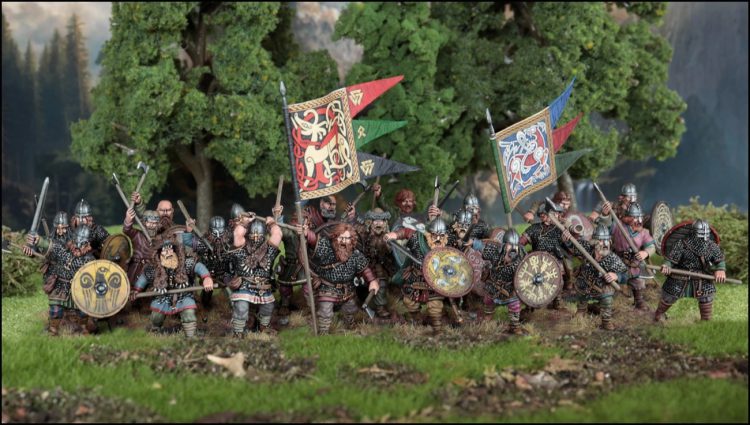
You can buy all their kits on the Victrix website.
Warlord Games
To go alongside their Shieldwall ruleset, Warlord do a considerable range of Viking Age miniatures, including hard plastic boxsets of Viking Hirdmen and Bondi, as well as Saxon Thegns and Ceorls. They also do a really extensive range of metal miniatures for the period, including some extremely characterful warlords.
You can buy all their kits from the Warlord website.
Gripping Beast
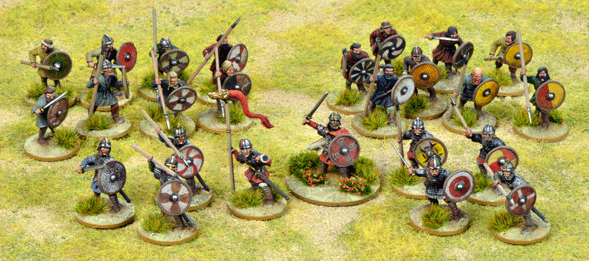
Gripping Beast sell a number of plastic kits, mostly to support Saga, and they’re a great place to start if you want to play that game. They also have several other plastic sets that are under their Swordpoint (mass battle) banner, and include some good generic archer and cavalry sets to mix and match with the more ubiquitous infantry offered by many places. They also do a very comprehensive range of metal miniatures to support almost any faction you can think of for the period.
You can buy all their kits on the Gripping Beast website.
Conquest Miniatures
Conquest are a smaller miniatures company that produce a range of medieval miniatures in plastic kits, as well as a range of metal miniatures to support them. These kits are primarily focused on the Normans, with infantry, cavalry and archers available.
You can buy their kits from the Conquest website.
Footsore
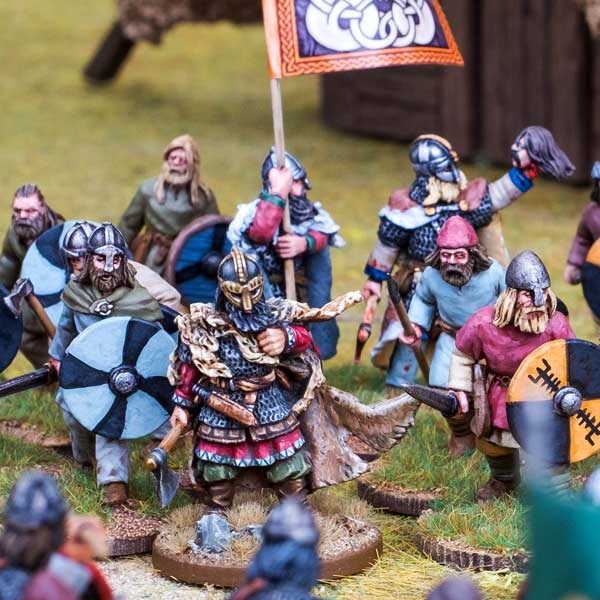
Footsore offer miniatures in metal and limited amounts of resin, and are known for their characterful miniatures with compelling sculpts and poses. They also offer good range of factions not normally featured by retailers, including dark age Irish warriors.
You can buy all their miniatures from the Footsore website.
Wargames Atlantic

A relatively new company, they currently offer only one kit for the period, but it’s a hard plastic multipart dark ages Irish kit, which is something no one else offers. The kit itself has lots of options for different heads, shields and weapons, including the iconic shillelagh. They also include a large group of Irish wolfhounds, which is an excellent addition.
You can buy the dark age Irish kit on the Wargames Atlantic website.
Forged in Battle
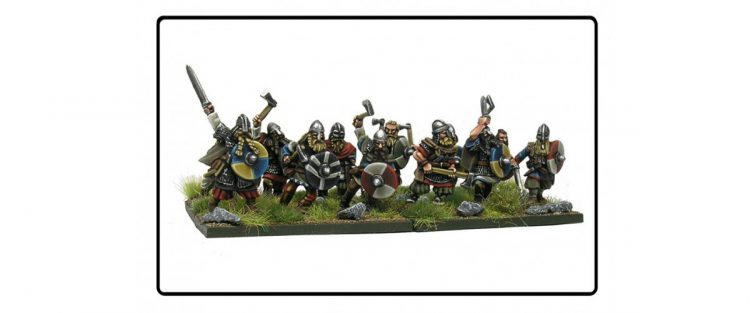
A new and enormous range of 15mm miniatures for this period, these are genuinely impressive and deserve a look. Lupe is eagerly awaiting his preorder to take a further look at them.
You can pick up miniatures from this range on their website.
Where to start
Saga Starter (£108)
- Saga Core Rulebook (£10)
- Saga: Age of Vikings (£30)
- Plastic Viking Saga Starter (£22)
- Plastic Anglo-Dane Saga Starter (£22)
- Norse Saga Dice (£12)
- Saxon Saga Dice (£12)
This is a really complete starter for Saga: Age of Vikings, giving you two four-point forces and the rules and saga dice you’ll need to run them. You’ll need some d6s and also a tapemeasure, but as long as you have that and a 3’x4′ place to play, you can get started.
Lion Rampant Starter (£89)
- Lion Rampant Rules (£13)
- Victrix Late Saxons/Anglo Danes (£38)
- Victrix Vikings (£38)
A very simple start with some lovely miniatures to get going with. You’ll also need some bases, as the Victrix models don’t come with any – I’d recommend 25mm rounds or squares. As long as they’re all based the same, it really doesn’t matter. You can build a lot of different forces with these, but here are a couple of examples:
Viking Warband
- 6 Foot Men at Arms (Beserkers and command) 6pts
- 12 Foot Serjeants with the Expert Upgrade (Armoured vikings with swords and shields) 6pts
- 12 Fierce Foot (Armoured vikings with daneaxes) 4pts
- 12 Foot Yeomen (unarmoured vikings with spears and shields) 4pts
- 12 Foot Yeomen (unarmoured vikings with spears and shields) 4pts
Anglo-Dane Warband
- 6 Foot Men at Arms (Armoured thegns with swords and shields, with command) 6pts
- 6 Foot Men at Arms (Armoured thegns with swords and shields) 6pts
- 12 Foot Sergeants (Armoured warriors with spears and shields) 4pts
- 12 Foot Yeomen (Unarmoured warriors with spears and shields) 4pts
- 12 Foot Yeomen (Unarmoured warriors with spears and shields) 4pts
Wrap-up
That’s it for Getting Started: Viking Age. We hope this has been a helpful guide to how to get into this exciting period of historical wargaming! Over the next few weeks, we’ll have more tiny Viking content, including a How to Paint Everything guide, a deeper dive into some of the rules available, and a guide on making your own thatched buildings for the tabletop. If you have any comments or feedback, then let us know in the comments here, on Facebook, or at contact@goonhammer.com.


